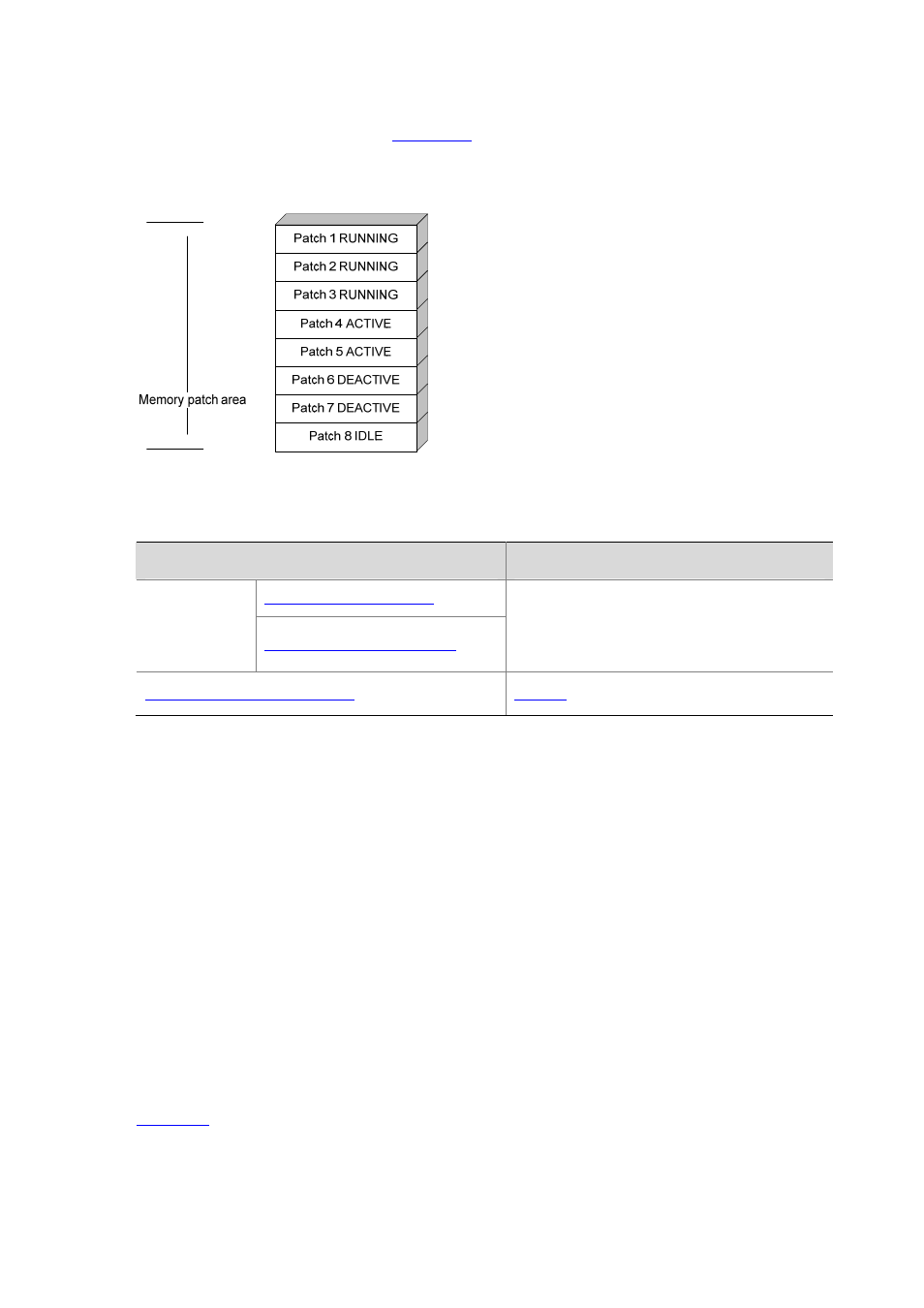Hotfix configuration task list, Configuration prerequisites – H3C Technologies H3C S7500E Series Switches User Manual
Page 152

10-8
running the first three patches, their states change from ACTIVE to RUNNING. At this time, the patch
states of the system are as shown in
The patches that are in the RUNNING state are still in the RUNNING state after system reboot.
Figure 10-6 Patches are running
Hotfix Configuration Task List
Task
Remarks
Install patches
Step-by-Step Patch Installation
Use either approach.
The step-by-step patch installation allows you to
control the patch status.
Step-by-Step Patch Uninstallation Optional
Configuration Prerequisites
Patches are released per device model or card type. Before patching the system, you need to save the
appropriate patch files to the storage media of the device using FTP or TFTP. When saving the patch
files, note that:
z
The patch files match the device model and software version. If they are not matched, the
hotfixing operation fails.
z
Name the patch file properly. Otherwise, the system cannot locate the patch file and the hotfixing
operation fails. The name is in the format of "patch_PATCH-FLAG suffix.bin". The PATCH-FLAG
is pre-defined and support for the PATCH-FLAG depends on device model or card type. The first
three characters of the version item (using the display patch information command) represent
the PATCH-FLAG suffix. The system searches the root directory of the storage medium (flash by
default) for patch files based on the PATCH-FLAG. If there is a match, the system loads patches
to or install them on the memory patch area.
describes the default patch name for each card type.